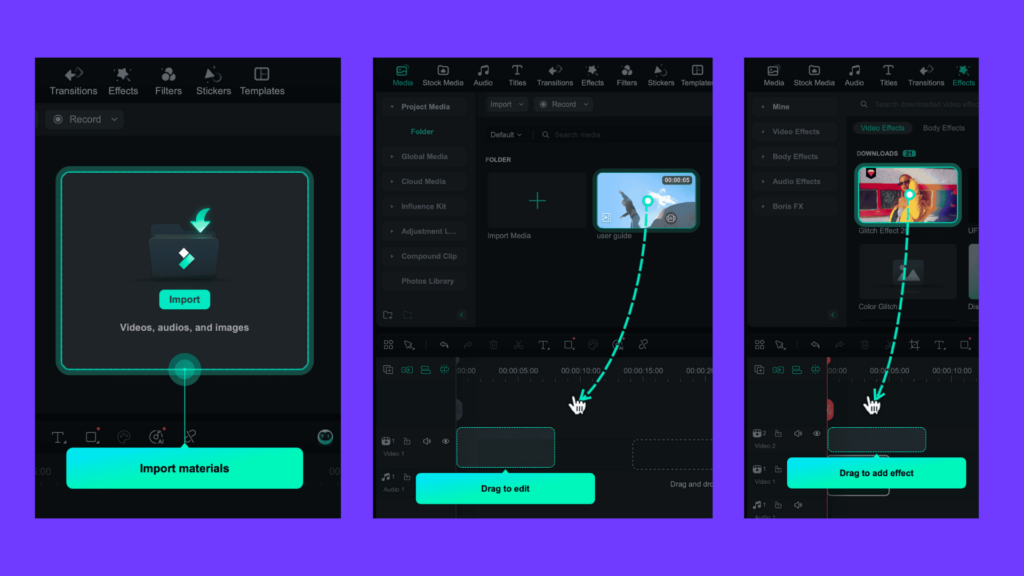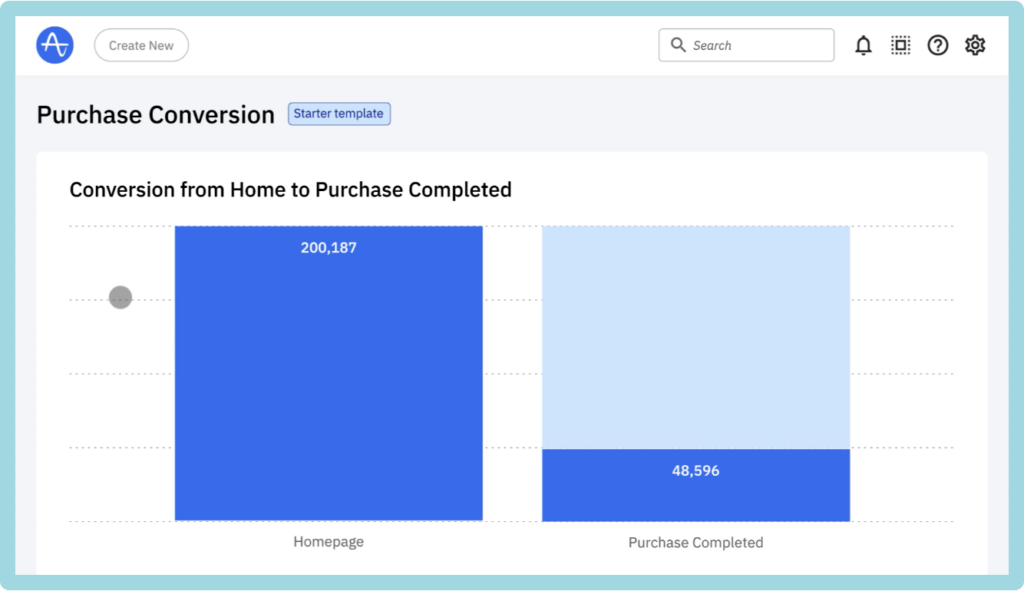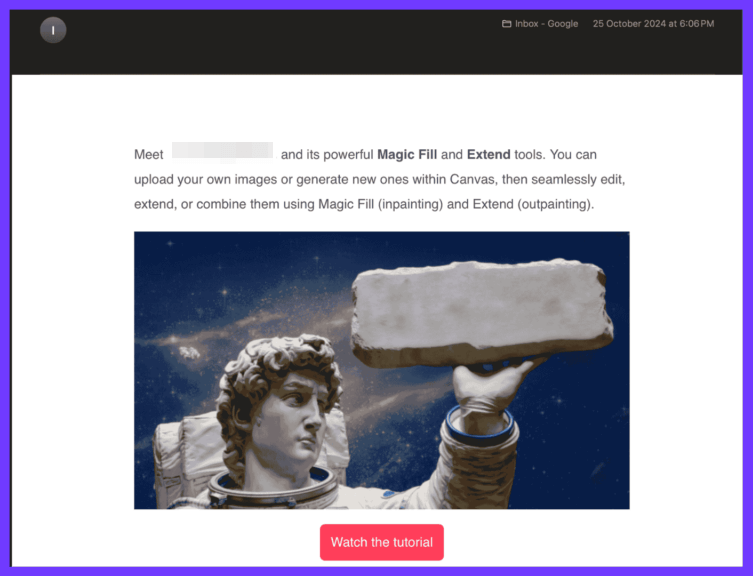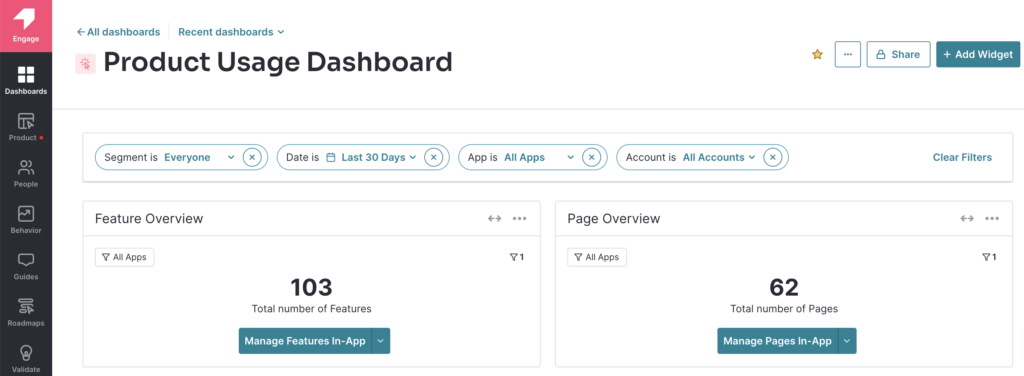I have this habit where, every Friday evening, I spend about two hours checking out AI advancements during the week. And there’s always something new.
Today, I decided to check out a new image generator. I tried out the free tier, and thought to myself: “Well, I don’t see anything new here!” In fact, it wasn’t even giving me better results than the tools I’m currently using.
Just when I was preparing to leave the platform, I stumbled upon a ‘hidden’ feature that I thought was a game changer. This feature would allow me to create my own custom-style images without having to train the AI on a bunch of existing images first.
This is something no competitor software does, and I know people who would pay for this feature alone. So how come the developer didn’t mention this feature anywhere on their website?
You see, there are hundreds of SaaS companies that have great products, but don’t see good ROI because of poor customer success planning. They also overlook how certain AI tools help with that planning, providing an excellent customer experience and ultimately driving growth.
How can your business use AI to support customer success? Here are four of the best ways to get started.
Strategy #1: Provide Personalized Onboarding for a Seamless Customer Journey
When you have a clunky onboarding experience, expect customer churn. First impressions matter, right?
So instead of underwhelming your new users with generic tutorials, you’ll want to opt for a seamless, personalized welcome. Of course, that’s easier said than done.
One of the biggest onboarding challenges customer success teams face is balancing the need for comprehensive training with the user’s desire for a quick and easy start.
Here’s the thing: users often abandon the onboarding process if you bombard them with information irrelevant to their immediate needs. They also don’t like it when the learning curve is too steep.
All software solutions are not the same, of course. Some are nice and simple, while others include complex functionality.
Either way, you don’t want your customers to purchase a plan, only to have to scour the internet or check out online courses just to learn how to use your product to solve their problems.

Another challenge is identifying user needs and goals early on, so you can tailor the onboarding process effectively. For this, AI-powered onboarding can leverage machine learning algorithms, specifically clustering and classification, which helps in analyzing user data.
These algorithms can process data points like:
- Industry
- Business size
- Stated goals during signup
- Early in-app behavior (clicks, page views, feature usage)
They can also categorize users into distinct segments. This allows the system to predict which features are most relevant to each user group, and personalize the onboarding flow accordingly.
For example, machine learning algorithms use supervised and unsupervised learning to identify patterns in customer behavior and preferences.
Natural Language Processing (NLP), on the other hand, analyzes textual data from customer interactions to gauge needs and sentiments.
As for predictive analytics tools, they forecast user needs and potential challenges based on historical data.
A few examples of these AI tools include Twilio Segment, which aggregates and analyzes user data to create detailed customer profiles, and Amplitude, which provides behavioral analytics to track and predict user interactions.

Using AI can makes onboarding more effective and relevant. That means faster user adaptation and increased satisfaction.
Just keep in mind that these tools require high-quality data for accurate personalization. There are also potential privacy concerns, and the need for continuous model training to maintain effectiveness.
Strategy #2: Offer Proactive Support To Enhance Customer Success
Reactive support makes it hard for customers to achieve their goals with your product or service. That’s because you only help out when issues arise.
In other words, your customers are forced to spend a lot of time troubleshooting, which slows their progress and causes frustration.
Proactive support, on the other hand, anticipates customer needs and addresses issues before they become significant obstacles.
To offer personalized assistance, you can use tools like AI-powered chatbots, which provide instant, tailored responses based on how customers are using the product.
There’s also automated outreach, where you send customized messages with tips, tutorials, or reminders to help customers get the most out of your product.

Some examples of AI tools that help you provide proactive support include:
- Salesforce Einstein. Provides predictive insights that help support teams identify and address potential customer issues before they escalate.
- Helply. Our own AI customer service agent, which uses machine learning and natural language processing to autonomously answer many support questions.
- The AI agent can scan different data sources, like your websites, knowledge bases, or even previous support tickets, to provide more accurate responses. This allows it to resolve customer issues rapidly, often without the need for human support.
Proactively addressing issues reduces churn, and improves customer satisfaction. It’s a vital part of delivering great experiences.
It’s also better for your business! When you automate routine tasks and prevent problems before they happen, you save time and resources your support team would otherwise waste.
Strategy #3: Leverage AI-Powered Guidance To Help Customers Succeed
One of the biggest causes of churn is when customers don’t fully utilize a product’s features. This can directly impact their ability to achieve their goals.
This often happens because your customers don’t know how to navigate the product effectively. They might not even be aware of certain features that could benefit them.
Better onboarding, like we discussed earlier, can help with this. But what about after those first few hours or days? Here are a few ways to provide longer-term guidance.
Contextual AI-Powered Help
AI-powered in-app guidance tools use machine learning and real-time behavioral analysis to offer personalized assistance. This is usually based on what the user is doing at any given moment.

Instead of relying on pre-programmed rules, these systems dynamically adapt to unexpected user behavior and provide relevant tips or tutorials.
They analyze a user’s current activity within the app (which could be features they’re interacting with or how long they’ve been stuck on a particular task), and offer tailored help. This might include suggesting a tutorial video, linking to a relevant article, or even offering live chat with a support agent.
One solution in this category is Pendo, which tracks user behavior and provides in-app guidance based on real-time actions. It also leverages machine learning to analyze user feedback and extract insights from product usage data.
Personalized Feature Recommendations
Some AI platforms can analyze customer data to recommend the features or integrations that are most relevant to each user. This functionality relies on predictive models to suggest features that the customer hasn’t yet explored, but would likely find valuable based on their profile and behavior.
The better versions of these systems continuously learn from user interactions, and adapt recommendations over time. For instance, if a customer frequently uses one feature but ignores another related feature that could enhance their workflow, the AI might proactively suggest it.
If you’re looking for this functionality, Gainsight PX is an option. It tracks user behavior and engagement data, enabling more personalized in-app experiences.
Progress Tracking with AI Feedback Loops
Your users are human, which means positive reinforcement is everything. You can use AI to track their progress toward specific goals (setting up an account, completing onboarding tasks) and provide personalized feedback or encouragement.
Certain AI systems can identify when a user is falling behind or struggling with a particular task, and offer targeted help or motivation at just the right moment. They might also detect when someone is not making progress towards key milestones, and intervene with suggestions or reminders tailored to their unique situation.
The tools you use here will depend on what types of progress you’d like to track and encourage. Just keep in mind that for these systems to work effectively, they’ll need access to high-quality data about user behavior and preferences.
Strategy #4: Lean On AI-Driven Product Innovation for Customer Success
AI’s influence on customer success isn’t limited to just support and engagement. It also plays a pivotal role in driving product innovation.
By leveraging AI to analyze customer feedback, usage patterns, and market trends, you can continuously improve your products in ways that directly align with customer needs.
Here’s how AI can drive product innovation for customer success:
- Analyzing customer feedback. AI-powered tools like MonkeyLearn and Qualtrics XM can analyze large volumes of customer feedback from various sources—such as surveys, reviews, social media, and support tickets. Then they’ll identify recurring themes, pain points, and feature requests.
- Predicting future trends and customer needs. AI-driven predictive analytics tools like Crimson Hexagon and Tableau with Einstein Discovery can forecast future market trends and customer needs, by analyzing historical data and external factors such as industry reports or competitor activity.
- Optimizing product features based on usage data. Remember how we mentioned that AI tools can analyze how customers interact with product features in real time? These systems, such as Mixpanel, identify which features are most valuable to customers, and which may need improvement or removal due to low engagement.
AI-driven analysis ensures that product development is closely aligned with what customers actually want, leading to higher satisfaction rates.
Taking the Complexity Out of AI-Driven Customer Success
From personalized onboarding to proactive support, AI is transforming the landscape of customer success.
AI-powered guidance eases transitions, and empowers users to fully leverage your product’s capabilities. It can even optimize the entire customer journey, driving product adoption and maximizing customer lifetime value.
Of course, many AI solutions (at least right now) are expensive and technically complex. They require a significant investment to reap the full benefits.
If you don’t have the time and resources for that, there are simpler ways to enable AI-driven customer success. Instead of turning your business upside down, you can slot powerful, intuitive AI features right into your existing workflows.
How? Via Helply, your AI-powered customer success agent. Helply learns from your existing resources (knowledge base, marketing site content, past support tickets, internal documentation) and continuously optimizes the customer experience.
Best of all, it’s affordable, easy to use, and supplements your human support team without upending their daily routines. Try Helply today, and experience the future of customer success!




